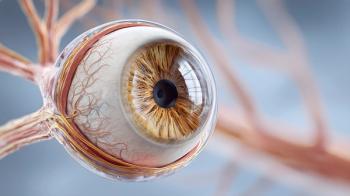
How Can Myopia Be Reduced?
There are several explanations for the growing number of nearsightedness people.Time spent looking at computer and cellphone screens has been identified as a culprit.
A growing proportion of people are nearsighted or, to use the medical term,
Researchers have come up with a number of explanations for the growing number of nearsightedness people. Not surprisingly, time spent looking at computer and cellphone screens has been identified as a possible culprit. There is also a theory that nearsightedness is associated with lack of time spent outdoors. Results from a randomized trial published in 2018 showed differences in the eyes of children who were encouraged to spend more time outdoors that would positively affect myopia.
Researchers are looking for other ways to lessen myopia, which is caused by the shape of the eye and, more specifically, when the eye takes on an oval shape and grows too long from the front to back. Some of the interventions that have been tested include atropine drops (the thinking is that they affect the scleral tissue — the white of the eye — and therefore retard the lengthening) and wearing special contact lenses at night to flatten the cornea (orthokeratology).
Another approach are multifocal contact lenses, which focus some light on the retina to improve distance vision and some in front of the retina, which some evidence suggests would affect the elongation of the eye.
According to the National Eye Institute (NEI), which is one of the institutes of the National Institutes of Health, multifocal contact lenses have been used on an off-label basis for years to slow the progression of myopia. Meanwhile, though, the NEI has been funding the BLINK (Bifocal Lenses in Nearsighted Kids) study to test multifocal lenses in a randomized trial and build up the evidence base for whether they work or don’t work.
The BLINK researchers enrolled 294 children, ages 7 to 11, at two optometry schools in Columbus, Ohio, and Houston. They were randomized into three groups of an equal number (98) children. Children in one group wore single-vision contact lenses, children in another group wore “medium add power” versions of the multifocal lenses and a children in the third group wore high add power lenses. The primary outcome was a standard measurement of the worsening of myopia after three years.
Results of the BLINK study were
The high power add versions of the lenses were more effective than the medium power at slowing down myopia, and the medium ones were more effective than the single-vison lenses. The lenses stacked up the same way when the researchers measured the shape of the eye in the dimension that affects myopia.
“Multifocal contact lenses slow myopia progression in children” was the unequivocal headline on the
However, the accompanying editorial by Neil M. Bressler, M.D., of Johns Hopkins University, suggested interpreting the BLINK results with caution. Bressler said the clinical difference in the myopia reduction between high power lenses and the single-vision lenses was unclear. He also said that prevention of myopia may be less relevant than prevention of pathological prevention. In addition, Bressler noted that outcomes measured after three years couldn’t show whether the effect of the lenses will last into adulthood.
Newsletter
Get the latest industry news, event updates, and more from Managed healthcare Executive.






















































